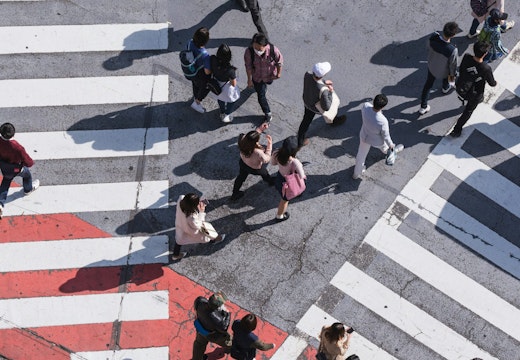Six things we learnt from the Healthy City Design Congress 2022
Changing patterns of work are set to have a huge impact on making urban life more liveable and more sustainable, as experts at an annual congress on creating the healthy city explained
Making our cities healthier for people and more sustainable for the planet depends on the inter-relationship of a whole host of factors – from urban planning and community engagement to smart technologies and new mobility solutions.
According to the 2022 Healthy City Design International Congress, held in London on 10-11 October 2022 at the Royal College of Physicians, the changing parameters of work are right in the mix too as a key contributor to better urban wellbeing.
WORKTECH Academy supported the work and workplace strand of this annual event, and Academy director Jeremy Myerson was academic convenor for the Congress as a whole.
The Congress theme this year was ‘Diversity, Inclusion and Opportunity for All’ and the new landscape of work was very much on the horizon as international experts gathered to share knowledge. Here are six things we learnt about hybrid work and the healthy city:
Suburbs reborn?
In one of the standout presentations of the Congress, Gerry Tierney, Director of the Mobility Lab at Perkins+Will, drew our attention to a changing role for suburban areas in the future of work. Tierney argued that, ‘Instead of looking at working from home in zero-sum terms, we need to take a holistic account of our cities and suburbs to create a balanced, sustainable and equitable live-work environment.’ He sketched out a scenario for the development of tech-enabled suburban workspaces within a short walk or bike ride from home to replace the spare bedroom as a key setting for hybrid and remote work. Decades of land use and zoning dogma would be swept away, breathing new life into the ‘dead’ suburbs.
Follow the science
For many citizens, urban wellbeing and vibrancy starts with the workplace. A core message from Britni Stone from architects NBBJ was that the office of the future should be oriented around wellbeing and supported by scientific research. Stone emphasised the importance of providing support spaces, mindfulness rooms and restorative zones in order to create settings for reflection and relaxation. These interventions should be informed and inspired by research into the neuroscience of office workers – and they don’t have to be indoors either. Outdoor workspaces are important too.
People, purpose and planet
Design that thinks more closely about people, purpose and planet will create more responsive, responsible and adaptive workplaces that can contribute to the health of cities. That was the theme of a presentation by Aaron Taylor from Stantec, who echoed the need for wellbeing to be central to the design process. Taylor stressed the value of workplaces that respond to changing needs throughout the day and strive to connect workers, brand and the environment. Stantec’s project for the pre-Elon Musk Twitter in Boulder, Colorado, was used as a case study to illustrate these ideas.
Light and shade
Dr Shelly James from Age of Light Innovations drew much-needed attention to the role of lighting in the workplace. Our brains and bodies are designed to respond to natural light, so our sleep, emotions and wellbeing are all greatly affected by a lack of natural lighting. James compared bright lighting to ‘a cup of coffee for the brain’ and likened many offices to greenhouses trying to grow lettuces in the dark. She explained that the average person sitting in an office receives around 2 per cent of the light levels they really need. Lighting offices more effectively will make a significant impact on worker health and wellbeing in the city, said James.
From pump to plug
It isn’t just lighting infrastructure that needs to change. Mobility infrastructure needs to change too as electric and autonomous vehicles start to arrive on a wave of technological innovation. A bold project presented by Lisa Hsieh and Chris Green of ERA-Co sketched out a design masterplan to ‘Re-Charge LA’: to replace the iconic gas station sites of Los Angeles with a green infrastructure that rebalances environmental justice and provides low-carbon urban amenities including affordable housing. The schemes targets the ambitions of LA’s Green New Deal – phasing out petrol and diesel cars is part of the pump-to-plug process.
Unworking the city
Finally, WORKTECH Academy’s Jeremy Myerson used the publication of his new book co-authored with Philip Ross, Unworking: The Reinvention of the Modern Office, to argue that one of the most important things to ‘unlearn’ or unwork’ is the city itself. As he explained: ‘We’ve got to get away from the idea that city zoning and commuting patterns are set in stone, and that the Central Business District, which so shaped the 20th century city, will be around forever. It won’t.’ Myerson explored a range of new ideas for the city as it adapts to the rise of hybrid work – from the 15-minute city to City 2.0 with its own operating system and the CBD reinvented as the Central Social District. If urban health is going to improve, work practices must help to catalyse that change.








